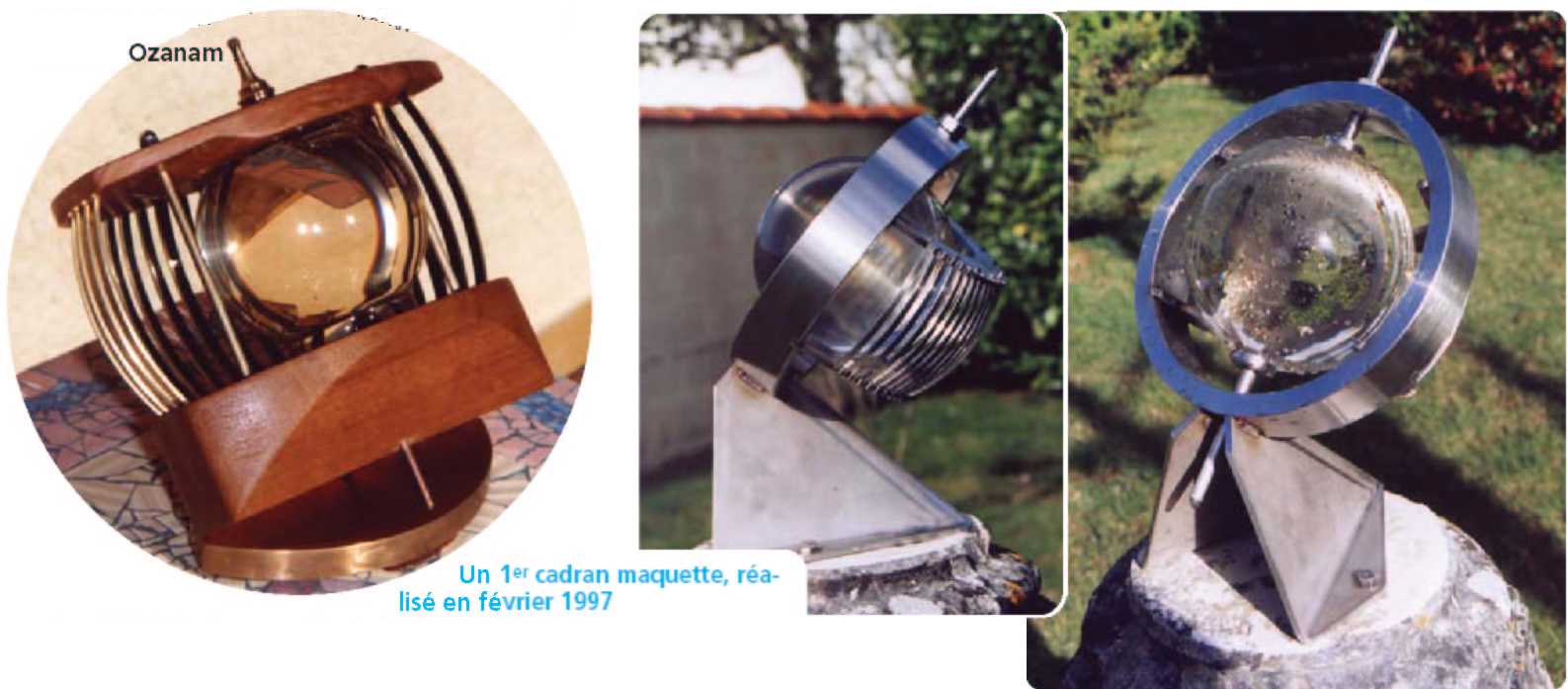
|
IT ALL STARTED insidiously in January 1993 when Robert Sagot, the president of the commission of the Sundials of the SAF sent me the photocopy of problem XVIII, the Mathematical book of Jacques Ozanam "Récréations and Physiques" volume III, part seven, edition of M.DCC.LXXVIII (1778). In my thirst for knowledge of the dials, I read this document, carefully arranging all this news and invaluable information in my memory. The original text is not accompanied any reference with an unspecified figure. The instrument was completely realizable in this end of the XVIIth century, but to date I have no proof it had been carried out. The technical description by Ozanam is correct, by considering only the index of refraction of water (N = 1.333), the focal length is well with 9 inches of the surface of the container. This last would have 486mm diameter, by taking 1 inch = 27mm. In November 1996, the departmental president of the Association for the blind, Valentine Haüy, having learned my passion for the sundials, suggested me carrying to the touch of his friends, some of my achievements. It was the catch bus not only this exposure m'était pleasant, but it started the desire to carry out the dial of Ozanam! |
|
||||

|
|
A 1st dial model, realized in February 1997 The container is a small spherical photophore out of glass, (diameter 84mm), filled with water. Average index of refraction of the ensemble glass+water is 1.339.The mounting of the dial is out of wood and comprises 23 blades curved out of brass. At an ambient temperature of 14.5°, the first blade reached 34.5° in 13 minutes then its temperature drops as much as 18°. These same 18° are found at the same time on the following blade which reaches 31° and so on. The ends of my fingers identified the hottest blade with difficulty; on the other hand, while making quickly roll the back of the hand on the blades, hottest is quickly discovered. One should not leave its hand too much close to the blades when the focus is not seen, because even the Sun of February causes an excessive heat and a fast withdrawal of the hand. Labelling of the hours was carried out in Braille by a volunteer. A scientific apparatus, the heliograph, uses this same principle to measure the duration of insolation in a place, by burning a paper band during one day. The measure of length of the burn indicates the time during which the sun was shining. |
A second dial of greater dimension, realized in April 2003 The high price of a swell out of glass for a long time prevented the realization of a dial of greater dimension until day when I been able to buy at Emmaüs a gazing ball of 150mm of diameter.The ball is immobilized in the center a ring of stainless steel is one counts 25 time blades. The tests carried out in April 2003 gave the following results: The temperatures are recorded on the ends(?) of the blades. On the level of the focus the noted values go from 65° to 76.5°. When the focus is located between two blades, these last are, with the height of the focus, generally with 32°. Wind and strong violent gales make measurements difficult, making them fall as much as 10° in a few seconds. |